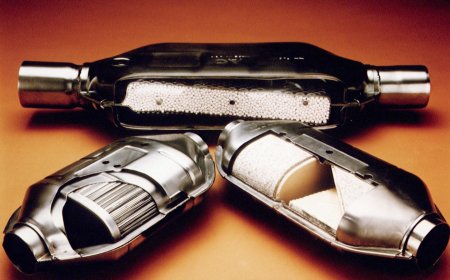Excedrin Migraine: Uses, Dosage, Side Effects, and Precautions
Excedrin Migraine is a popular over-the-counter medication used to treat migraines. Learn more about its uses, side effects, and precautions in this informative article.

Excedrin Migraine: Uses, Dosage, Side Effects, and Precautions
Excedrin Migraine is a combination medication that contains acetaminophen, aspirin, and caffeine. It is commonly used to treat migraines, a type of headache that causes a throbbing pain on one side of the head. This medication is easily accessible over-the-counter, and it is a popular choice for those seeking relief from migraines. In this article, we will explore the uses, dosage, side effects, and precautions of Excedrin Migraine.
What is Excedrin Migraine?
Excedrin Migraine is an over-the-counter medication that is used to treat migraines. It contains a combination of three active ingredients: acetaminophen, aspirin, and caffeine. The medication is manufactured by Novartis Consumer Health, Inc. and is available in the form of caplets, geltabs, and tablets. Excedrin Migraine has been approved by the FDA for the treatment of migraines.
How does Excedrin Migraine work?
Excedrin Migraine contains three active ingredients that work together to relieve migraine symptoms. Acetaminophen helps to reduce pain and fever, while aspirin reduces inflammation and pain. Caffeine helps to constrict blood vessels in the brain, which can reduce the severity of migraines. The combination of these three ingredients makes Excedrin Migraine an effective treatment for migraines.
What are the uses of Excedrin Migraine?
Excedrin Migraine is primarily used to treat migraines, which are a type of headache that can cause severe pain and other symptoms. Some of the common symptoms of migraines include throbbing pain on one side of the head, sensitivity to light and sound, nausea, and vomiting. Excedrin Migraine can help to reduce the severity of these symptoms and provide relief for migraine sufferers.
How should Excedrin Migraine be taken?
Excedrin Migraine should be taken as directed on the label or as prescribed by a doctor. The medication is available in the form of caplets, geltabs, and tablets, and it should be taken with a full glass of water. The recommended dosage for adults is two caplets, geltabs, or tablets every six hours, with a maximum daily dose of eight caplets, geltabs, or tablets.
What are the side effects of Excedrin Migraine?
Excedrin Migraine can cause side effects in some people. Some of the common side effects of Excedrin Migraine include upset stomach, heartburn, nausea, vomiting, dizziness, drowsiness, and headache. In rare cases, Excedrin Migraine can cause more serious side effects, such as liver damage, bleeding, and allergic reactions. If you experience any of these side effects, you should stop taking Excedrin Migraine and seek medical attention immediately.
What precautions should be taken when using Excedrin Migraine?
Before taking Excedrin Migraine, you should inform your doctor if you have any allergies or medical conditions, such as liver or kidney disease, stomach ulcers, or asthma. You should also tell your doctor if you are taking any other medications, as Excedrin Migraine can interact with certain drugs. Excedrin Migraine should not be taken by children under the age of 12, and it should not be taken for more than 10 days without consulting a doctor.
Can Excedrin Migraine be taken during pregnancy and breastfeeding?
Excedrin Migraine should not be taken during pregnancy, especially in the third trimester, as it can cause harm to the fetus. It is also not recommended for use during breastfeeding, as small amounts of the medication can pass into breast milk and may harm a nursing baby.
What should I do if I miss a dose of Excedrin Migraine?
If you miss a dose of Excedrin Migraine, you should take it as soon as you remember. However, if it is almost time for your next dose, you should skip the missed dose and take the next dose as scheduled. Do not take extra medication to make up for the missed dose.
How long does it take for Excedrin Migraine to work?
Excedrin Migraine typically takes about 30 minutes to start working, although the time may vary from person to person. It is important to note that Excedrin Migraine is not a cure for migraines, but rather a treatment that can provide relief from symptoms.
Is it safe to use Excedrin Migraine for long-term treatment?
Excedrin Migraine is not intended for long-term use, and it should not be taken for more than 10 days without consulting a doctor. Long-term use of Excedrin Migraine can lead to rebound headaches, which are headaches that occur as a result of taking too much medication. If you experience frequent migraines, you should speak to your doctor about other treatment options.
How can I reduce the risk of side effects from Excedrin Migraine?
To reduce the risk of side effects from Excedrin Migraine, you should take the medication as directed and not exceed the recommended dose. You should also avoid taking other medications that contain acetaminophen or aspirin while taking Excedrin Migraine. Additionally, you should inform your doctor of any medical conditions or medications you are taking before using Excedrin Migraine.
Conclusion
Excedrin Migraine is a popular over-the-counter medication used to treat migraines. It contains a combination of acetaminophen, aspirin, and caffeine, which work together to provide relief from migraine symptoms. However, it is important to take Excedrin Migraine as directed and to be aware of potential side effects. If you experience any serious side effects or have any concerns, you should speak to your doctor.
What's Your Reaction?





















































